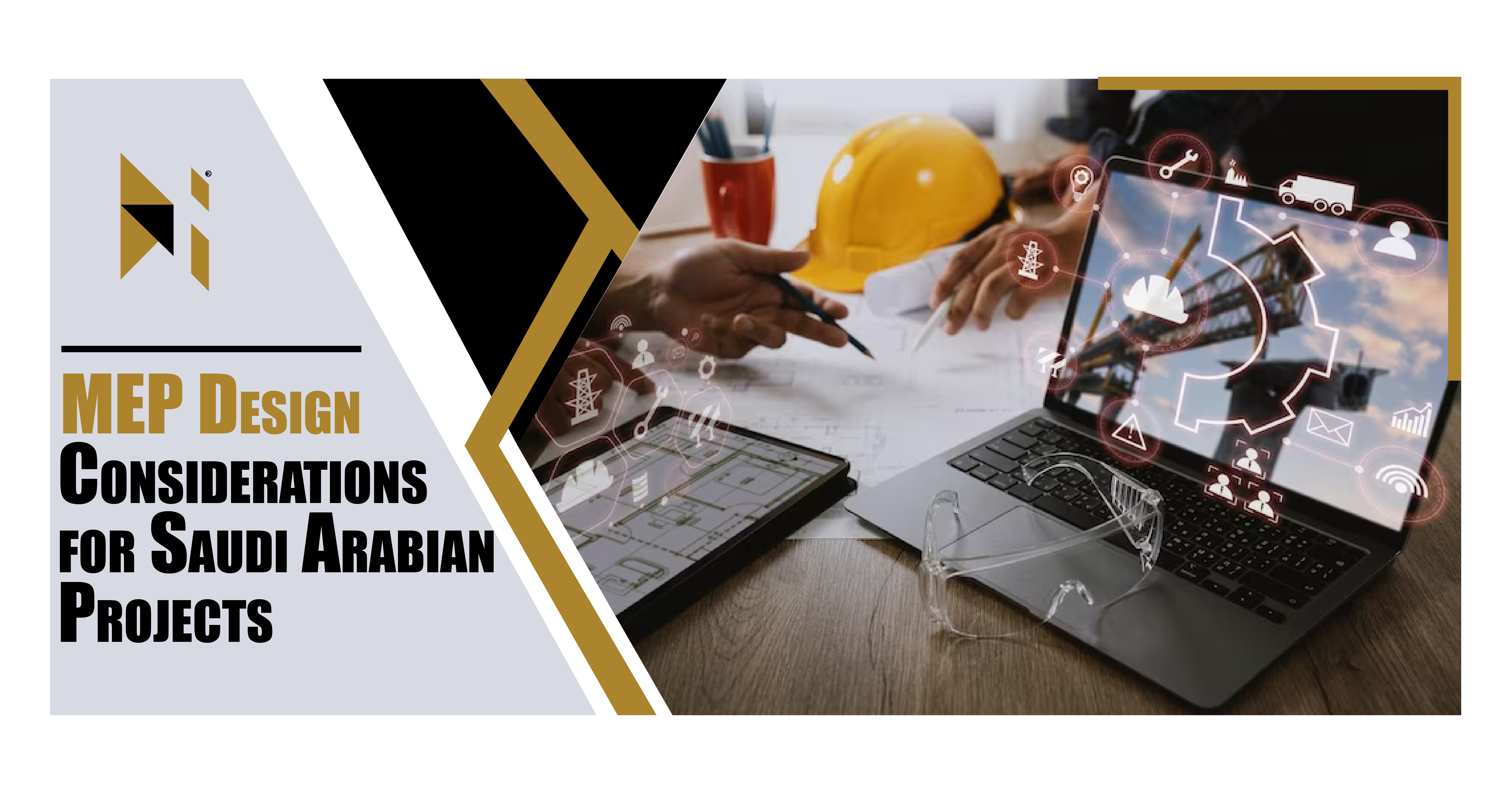Any construction project begins with a plan and an idea to go along. If there is no proper planning, you cannot achieve anything let alone start anything. You can begin a project but cannot execute it to perfection. To garnish proper results at each phase, you must adopt a set of rules, requirements, and solutions to ensure everything works flawlessly. The scenario is completely different if there is a top-of-the-line commercial project that requires a high degree of technology, engineering, and responsive systems such as MEP. There, requirements and expectations are high and require a high degree of perfection.
In any project involving MEP systems, the stakes are higher since the entire output of the structure is linked to it. For example, you may like to bring in an MEP system to get good energy efficiency or want to ensure that the HVAC system established makes for an ideal environment for residents to live inside a building. Hence, the importance is high and the expected outcome is nothing short of perfection. But to mix them all up, you need to get the planning and execution right to bore fruitful results. This read is all about different considerations that you can adopt in an MEP design system for different projects in Saudi Arabia, as being done by silver-foundation, a top MEP contractor service provider.
MEP is an engineering discipline that comprises or brings three top engineering services under a single roof. These services are mechanical, electrical, and plumbing, thus forming the name MEP. In an MEP system, there is vast importance of these three services or sub-systems. Established, these sub-systems work in coherence or coordination to provide results of great positivity. However, these results are only achieved if the systems are laid out correctly and in perfect harmony. Top MEP contractors have a good amount of experience in ensuring that the right system is laid through accurate measurements and executions. Understanding an MEP system is neither difficult nor impossible. All you need is to break down what each sub-system has to offer.
Mechanical System
The first service or system in the MEP is a mechanical system that is linked with all mechanical designs and activities of a building. Construction projects especially of commercial scales cannot live or begin without a properly laid mechanical system due to its importance. For example, the most in-demand mechanical service of this system is the design and implementation of HVAC. HVAC is Heating, Ventilating, and Air-Conditioning and is directed to lay out a network of ambient atmospheres inside a building. This means such a network helps to keep fresh air flowing inside a building, provides proper ventilation for good ambiance, and an air-conditioning system to improve the temperature inside a building in hot areas such as in Saudi Arabia.
The second important sub-system in an MEP system is the electrical system. We often say that most of the mechanical activities in an MEP system cannot work or be executed without proper electrical channels and networks. Hence, this service can be said as the core backbone of a building. Electrical systems are necessary and imperative for any building. This is why there is a need for an electrical system more than a mechanical system since you can live without a mechanical system but not without an adequate supply of electricity. In an MEP project, the electrical sub-system is directed at providing proper electrical connections to different areas of a building and devising a power box to merge all the electrical connections in one place.
Moving forward, another system that is highly critical and essential in an MEP system is the plumbing system. A plumbing system is more than a network system since it is a combination of lines, pipes, and ducts for one standard purpose, that is, to ensure adequate water is supplied to desired locations. Plumbing systems are a set of finely laid ducts and pipes that are often underground but ensure that water is transmitted to different areas without any trouble. By troubles, we mean water leakage which is another top consideration when laying out a fine and foolproof plumbing system or network. After you have successfully understood what an MEP system is and what it comprises, the next phase is even more interesting to understand and acknowledge.
Define the Project Scope
Now since we have entered the MEP project considerations regarding design and implementation, let us begin with the basic step in any planning that is defining the project scope. A project scope helps you to devise how effectively you need to pursue the project to meet the requirements that are listed by the landlord or client. Defining project scope also helps you to finalize various items such as material, labor, time, and budget which further helps in an uninterrupted workflow. When all such things combine, you get a perfectly laid-out plan. If you find it difficult to understand how to define a project scope, here are a few tips for you to consider.
- Conduct a thorough survey of the project site to outline various elements such as conditions, constraints, and opportunities
- Meeting and consulting with stakeholders regarding their objectives and goals and how much they want to coordinate
- Review various project documents such as designs, drawings, specifications, and permits
Coordination with Other Parties
An MEP system is not designed solely without any external support or coordination. In a building’s construction, various parties take part such as architecture, structure, civil, and fire equipment teams. All these departments and teams work as a collective unit to provide adequate results. And with an MEP team around, a building is considered to be in safe hands since all top-notch parties are present on the site. But to receive adequate results on the go, all teams must coordinate to be on the same page. With an MEP system to be laid, the MEP team must be always in discussion and coordination with all other relevant parties involved in the construction project on the site. To establish this coordination and connection, there can be followed the following basic rules and steps.
- Establishing a communication plan that is clear, easy to understand, and implement so each team coordinates effectively
- Using software tools such as BIM and CAD to transfer and share data for thorough and constructive discussions regarding the designs
- Conducting meetings and workshops to ensure that all recent updates are communicated and so that each team is updated with the current situation at work
Application of Latest Technology
An MEP service or system is incomplete without implementing the latest and modern technologies. These technologies are considered to be the backbone of an MEP system and require a profound acceptance to implement them. Often, stakeholders are reluctant to spend on innovative technologies but with a thorough debriefing, they can be lured to invest in this. Anyhow, the implementation of new technologies is essential and imperative in a way that they help to provide significant positive output. Below are some of the fast-growing MEP-related technologies that are being implemented worldwide.
- Renewable energy sources such as wind, geothermal, biomass, and solar reduce energy consumption
- Smart monitoring and metering systems to measure and control energy usage
- Remotely accessible technologies such as the Internet of Things (IoT) and Cloud interfaces
- Artificial Intelligence and Machine Learning provide recommendations and insights to improve an existing system
- Robots and drones to further enhance the examination, inspection, and security of the system
"Get in Touch"
“The field of MEP design and engineering is vast, diverse, and with endless opportunities. This is a service that devises and establishes a system of high perfection, accuracy, and output resulting in growth and savings altogether.“
Frequently Asked Questions
How good is an MEP system?
An MEP system is good enough to give you great benefits through the establishment of a fine structure of networks.
What are the three services in an MEP system?
An MEP system comprises three services or sub-systems namely mechanical, electrical, and plumbing.
What are two key benefits of an MEP system?
Two key benefits of an MEP system include less energy consumption and good energy efficiency.
What can be the deal breaker point in an MEP contractor hiring?
The most important deal-breaking point in an MEP contractor hiring is the budget of the project. If the budget is adjusted, then a fine MEP can be developed.
What are some of the modern technologies used in an MEP system?
Below are some of the modern technologies used in an MEP system:
- Internet of Things
- Cloud Interface
- BIM and CAD
- Robots and Drones
- Artificial Intelligence and Machine Learning

